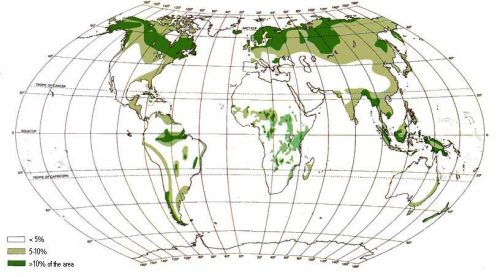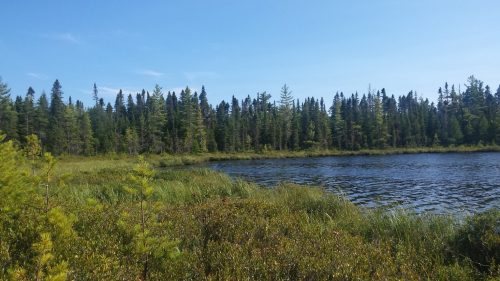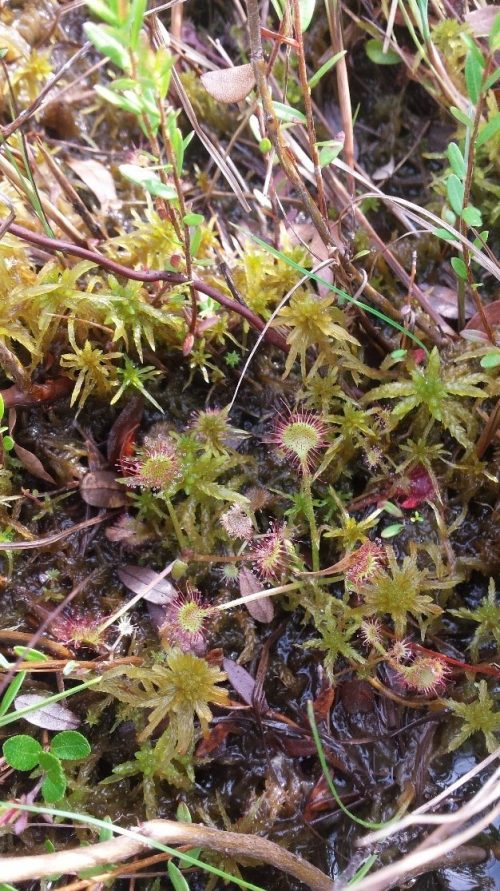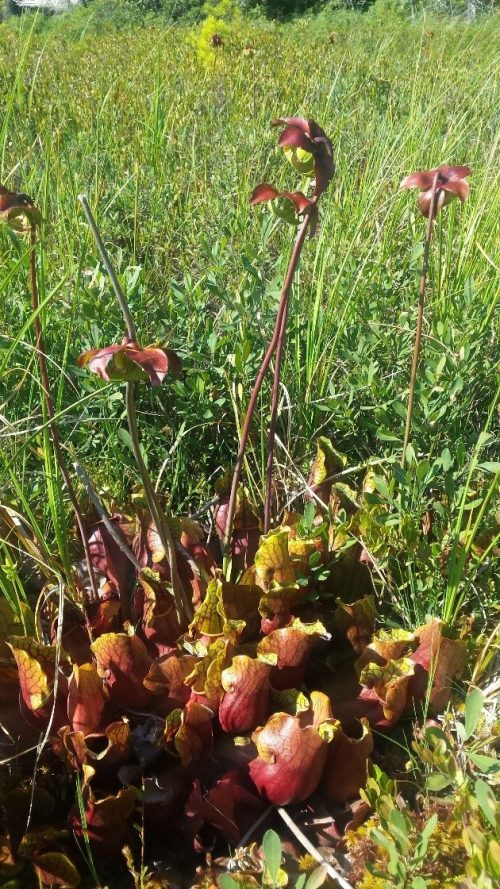by Jillian Demus
Sarracenia species, or North American pitcher plants, is a favorite genus of mine – stemming from my love of the harsh and rugged peatland ecosystems. To begin with, a peatland is an accumulation of organic matter due to incomplete decomposition. Like all wetlands, peatlands recycle nutrients, trap eroding soil, filter out polluting chemicals and are a sink for atmospheric carbon. A bog and fen are types of peatlands. A bog is defined as ombrotrophic, meaning rain-fed, where precipitation exceeds evapotranspiration. This is opposed to minerotrophic fens fed by surface and ground water deposits. There are many types and classifications associated with both. Based on these definitions, Washington is the southernmost range of bogs in western North America. They occur in lowlands mostly, not exceeding 1000’ elevation. Fens can exist in areas where there is less rainfall, because they do not require precipitation, so they occur further south into California. Bogs are also defined as being dominated by acid loving plants and sphagnum moss, lacking minerotrophic species. Fens lack ombrotrophic species. Other characteristics include low calcium, cations, and other nutrients, while the sphagnum acidifies the soil. So, plants evolved to get their nutrients from other sources. One such source is carnivory which is utilized by species in the genus Sarracenia and allows them to survive in such nutrient deprived ecosystems. This map shows peatland ranges around the globe and how frequently they occur.
These carnivorous plants bring me back to the root of my botany beginning: University of Wisconsin field trips, where I was lucky to bounce around private bogs with intelligent botanists and my personal plant identification mentors. I mean literally bounce because many bogs act like a trampoline mat – due to the sphagnum mat floating on the water (don’t fall in!). They become a haven for unique and gorgeous plant species you will not find in the surrounding woods. NA pitcher plants are native to the US Gulf coast states, north up the east coast, New England, Midwest and the Southern Canada provinces. Many Sarracenia species are hardy perennials in the Pacific Northwest, but keep in mind that some have become invasive and naturalized in a few Washington, California and European bogs due to horticultural introductions. Carnivorous plants exist around the globe, but this genus only occurs in North America at a count of 8-11 species.
North American pitcher plants lure in insects by the vibrant and veiny red, chartreuse or pink pitchers where nectar is formed around the rim. The bug will go to feed, slipping and falling into the ‘mouth’. The walls are too slippery for insects to crawl out, so the enzymes at the bottom digest them. Some species have hoods helping in this trapping process. These rigorous plants may be a dominant species of some bogs, like the Sarracenia purpurea shown here in a remote bog in central Maine surrounded by sundews, Labrador tea (Rhododendron groenlandicum), cranberry, and leatherleaf. S. purpurea is the only species in Sarracenia’s northern range, withstanding more extreme temperatures.
Seeing these creatures in the wild is wonderful but having a collection at home is amusing too. The easiest way to keep carnivorous plants is in containers. I keep my healthy pitcher plant in a pot with mostly sphagnum moss, potting mix and charcoal. Most sources say to use 50:50 peat moss and perlite or sand. Also, you can recreate your own bog in a relatively small space in your backyard. In the Pacific Northwest you should place your bog in a sunny location. In other regions you may need to worry about too much afternoon sun. Beware of flooding, as plants and soil could runoff, so choose the top of a hill or even ground. You can avoid winter flooding by creating a plastic dome over your bog.
First, dig a hole of 1.5 to 2 feet deep where you will line with plastic pool lining, hard plastic or even a hard kiddie pool. If using lining, you can edge the bog with cement blocks or rocks. Near the top of the pool, punch holes to allow drainage so your plants are able to wick water from the bottom with their roots but are not actually sitting in water. Next, fill the bog with 50:50 peat and sand, plant your unique perennials, then fill with water. Then, top the soil with more peat moss. This provides a natural look and can even help you determine when to water your bog – when the moss is dry. Filtered water or rainwater is best! Lastly, do not add fertilizer because they hunt for their own food. Blue poppies, or Meconopsis sp. can be grown in this same situation, but use a more organic matter-based soil (they are gluttonous for nutrients) and place in an area with no afternoon sun.
These plants can make a gorgeous addition to your garden or keep away bugs on your porch! Sarracenia ‘Bug Bat’, ‘Fat Chance’ and ‘Dana’s Delight’ are offered for sale at the RSBG and further described in our catalog!
Great Resources:
https://www.growcarnivorousplants.com/The-Ultimate-Carnivorous-Plant-Guide-Ebook-p/01001.htm
https://www.carnivorousplants.org/grow/environs/PNWbog
https://www.fs.fed.us/wildflowers/beauty/California_Fens/what.shtml




